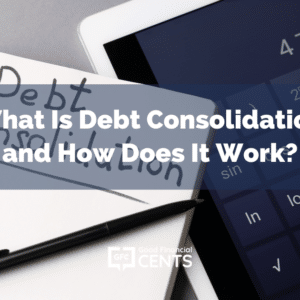An emergency fund is a financial buffer that can help you handle life’s unexpected events without falling into debt. It’s the foundational block of a sound financial plan, providing peace of mind and the assurance that you are prepared for life’s uncertainties.
In an ideal world, setting up an emergency fund would be as straightforward as putting a portion of your earnings into a savings account each month. However, in reality, high-interest debt can make saving difficult. This is where a balance transfer may come into play as a strategic tool in your financial arsenal.
Table of Contents
- Understanding Balance Transfers
- Benefits of Using Balance Transfers for Emergency Fund Setup
- Risks and Considerations
- Steps to Integrate Balance Transfers With Emergency Fund Planning
- Best Practices for Using Balance Transfers
- Alternative Methods for Setting up An Emergency Fund
- Bottom Line: Balance Transfers for Emergency Fund Setup
Understanding Balance Transfers
What Is a Balance Transfer?
A balance transfer is a financial move where credit card debt is transferred from one card to another, usually to take advantage of a lower interest rate offered as a promotion by the receiving card. This tactic is frequently used to consolidate debt and reduce interest costs, giving consumers the chance to pay down their principal balance more rapidly.
Costs Associated With Balance Transfers
Despite the initial benefits, balance transfers aren’t free from costs. Most credit cards charge a balance transfer fee, which is typically a percentage of the transferred amount. Additionally, the low introductory interest rate is temporary. After the promotional period, the interest rate often jumps to a higher standard rate. Understanding these costs is crucial for anyone considering a balance transfer as part of their emergency fund strategy.
Benefits of Using Balance Transfers for Emergency Fund Setup
Potential for Lower Interest Rates
The primary draw of using balance transfers to aid in setting up an emergency fund is the potential for lower interest rates. This can drastically reduce the amount of interest paid on existing debt. By transferring high-interest credit card balances to a card with a 0% introductory APR, you can temporarily halt the growth of existing debt and redirect what would have been interest payments into your emergency fund.
Opportunity to Consolidate Debts
Another significant advantage is the opportunity to consolidate multiple debts into one payment. This simplification of finances can make it easier to track and manage debt, preventing late payments and additional fees. More of your payment can go toward the principal balance, potentially freeing up cash more quickly for your emergency fund.
Risks and Considerations
Possibility of Higher Interest Rates Post-promotional Period
The risk of higher interest rates after the promotional period cannot be overstated. Should you fail to pay off the transferred balance within the introductory period, you may be subject to high interest rates, which can quickly negate any previous benefits. It’s imperative to have a clear repayment plan in place to avoid falling into this trap.
Impact on Credit Score
While balance transfers can be beneficial, they can also impact your credit score. Opening a new credit account and transferring balances can result in a hard inquiry and can also affect your credit utilization ratio. It’s vital to consider these potential impacts before proceeding with a balance transfer.
Steps to Integrate Balance Transfers With Emergency Fund Planning
Evaluate Current Financial Status
Before considering a balance transfer, take a thorough look at your current financial situation. Review your debts, interest rates, and terms. Understand your budget and determine how much you can realistically set aside for an emergency fund each month. This evaluation will inform your decision and help you to select the most beneficial balance transfer offer.
Set up a Repayment Plan
A well-defined repayment plan is critical when using balance transfers to facilitate the building of an emergency fund. The plan should include how much you need to pay each month to eliminate the transferred balance before the end of the promotional period. Without this plan, you could end up paying higher interest rates or damaging your credit score.
Best Practices for Using Balance Transfers
Always Read the Fine Print
The details in the fine print of a balance transfer offer can make or break its value to your financial strategy. Pay special attention to the length of the promotional period, the interest rate after the promotion ends, and the balance transfer fee. These terms will affect your repayment plan and the overall benefit of the transfer.
Prioritize Repayment Before the End of Promotional Periods
To fully benefit from a balance transfer when building an emergency fund, make it a priority to pay off the transferred balance before the promotional period expires. This requires discipline and a commitment to your repayment plan. Prioritizing this repayment can maximize the benefits of the transfer and prevent any negative financial repercussions.
Alternative Methods for Setting up An Emergency Fund
Regular Savings from Income
While balance transfers can be a useful tool, traditional methods for establishing an emergency fund should not be overlooked. Regularly saving a portion of your income is the most straightforward approach. This method may be slower but is often less risky and doesn’t involve potential interest rate increases or fees.
Seeking Additional Sources of Income
Seeking additional income sources can accelerate the growth of your emergency fund without incurring debt. Whether it’s through a side job, freelancing, or selling items you no longer need, additional income can be directly allocated to your emergency savings, thus bolstering it more quickly.
Bottom Line: Balance Transfers for Emergency Fund Setup
Balance transfers can serve as a strategic method for setting up an emergency fund, especially for those struggling with high-interest debt. By reducing interest payments and simplifying debt management, they can create the breathing room needed to start saving.
However, this strategy is not without risks, and it demands a disciplined approach to ensure that the benefits are realized. Careful consideration, along with a strong repayment plan, are essential components of using balance transfers effectively. While not the only method to build an emergency fund, for some, it may be a critical step toward achieving financial stability.







